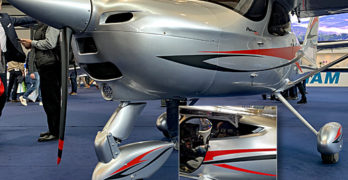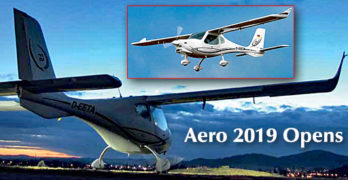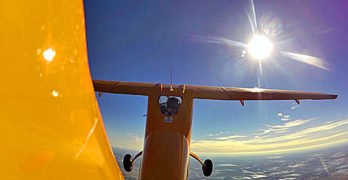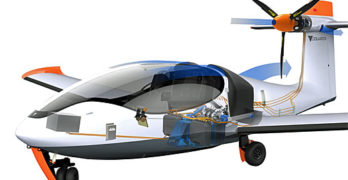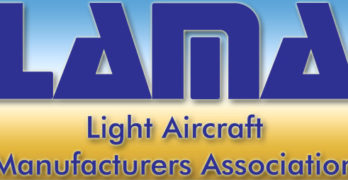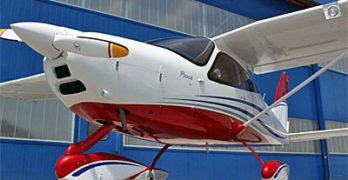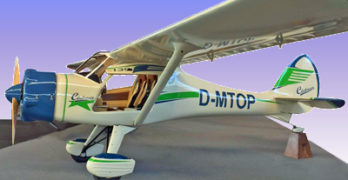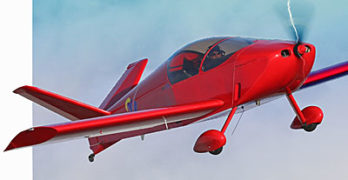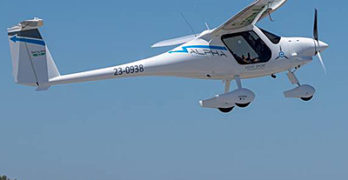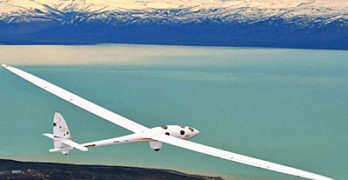Aero Friedrichshafen continues, delivering a broad preview of new aircraft projects plus a glimpse into light aviation in Europe. New ideas run from the fascinating to the futuristic. Some will never make it market but they can contribute ideas to be used on other designs, enhancing overall progress. How does Europe do so much of this? Government funding often comes up in discussions with developers; this is extremely rare in the USA.
Attending more than 20 Aeros, I’ve found new ideas every time. Indeed, I usually run out of time before I can get to hear every story. Aero never fails to deliver.
Tecnam P92 Mk II — Speaking of progress never stopping, how about Italian juggernaut, Tecnam? Their large space included their sweeping flock of high wing and low wing sport planes, certified four seaters, military projects, their popular Twin multiengine four seater; the company even showed their 11-seat Traveller regional airliner.
Search Results for : electric propulsion
Not finding exactly what you expected? Try our advanced search option.
Select a manufacturer to go straight to all our content about that manufacturer.
Select an aircraft model to go straight to all our content about that model.
Aero Friedrichshafen Day 1 Aircraft Highlights: Zlin Ultra 915, Flight Design F-Series, Belmont
Jetting straight from Sun ‘n Fun, we were able to arrive at Aero Friedrichshafen by noon on opening day. A quick swing around the most light-aircraft-filled halls (the “B” halls) brought some fresh surprises. Following are a few designs that caught my eye on an initial pass.
The profusion of light aircraft we don’t see in the USA — some of which will never reach the market — is one of the main reasons Aero Friedrichshafen is my favorite show in Europe. This mostly indoor fair (as Europeans call such shows) always has many ideas of interest.
Zlin Ultra with Rotax 915iS — Never one to rest Pascale Russo reintroduced his Ultra Shock from last Aero with the more powerful Rotax 915iS. Ultra Shock plays on the term “ultralight,” which means something different in Europe than in the USA (it is a reference to light aircraft quite similar to Light-Sport Aircraft).
The Little Airplane That Could …Merlin Can, and It Will Not Cost Much, Either
A popular American childhood story called “The Little Engine that Could” relates to this article. The Merlin PSA (Personal Sport Aircraft) from Aeromarine-LSA is a modern single place airplane that does everything you want — well, other than carry two people — while remaining highly affordable.
Given that some Light-Sport Aircraft shoot past $200,000 (some even past $300,000!), Merlin looks very reasonably priced for the rest of us.
A large number of LSA enthusiasts have complained that present-day LSA have become way too expensive for their budgets. Back when we were still awaiting Light-Sport Aircraft many pilots thought LSA would cost $50-60,000 and it seems not many choices are available in that range. Some are, but most are quite a bit more costly. It’s important to be accurate. Understand that $60,000 in 2002 — when people were speculating about the price of a LSA — is the same as $83,000 today, when you calculate the purchasing power of either number at those times.*
Now think of Merlin’s price tag.
Equator Light-Sport Aircraft Seaplane Secures Crowd Funding; Makes First Flight
This article has been updated with a new image; a minor correction was made.
LSA seaplanes have provided some of the most interesting new developments in aviation. Perhaps interest stems from the vast numbers of landable waterways compared to runways. Perhaps it’s the versatility of amphibians. Maybe people are simple drawn by the good looks or unique qualities of entries.
Among the several projects, one of the most fascinating has been the hybrid electric seaplane called Equator P2 Xcursion, from Norway. I have reported on P2 Xcursion before; here’s the earlier article.
Years in the Making
CEO and lead designer Tomas Brødreskift reports the company has invested some 30,000 man-hours into the Equator Aircraft project. An engineer, private pilot, and recreational flying enthusiast, he acquired a passion for flying that most readers know well. Like many of them, he saw in the aircraft he was flying a lack of modern design.
New Opportunities Coming for Light-Sport Aircraft — LAMA’s Advocacy Report
Things are looking up for Light-Sport Aircraft, rather fantastically so in my admittedly biased opinion.
While this space is usually dedicated to cool new airplanes — not boring government policy reviews …yawn! — this article will provide some rays of light to an industry approaching its 15th birthday (in September 2019). I think some of this may surprise you.
LAMA, the Light Aircraft Manufacturers Association (kind of a GAMA for the light aircraft sector) and its partner — USUA, the U.S. Ultralight Association — have been heads-down working on improving the opportunities for LSA.
Core-Four-Plus-One
In June 2018, a series of many meetings that began in 2014 came to an early but very promising point. Here is what I think this means for the Light-Sport Aircraft manufacturing industry and those who own and operate LSA.
LAMA took a long list of suggestions about the then-10-year-old industry and reduced it to four initiatives.
Tecnam the Magnificent — from Light-Sport Aircraft to Well Beyond
The big Italian company that LSA enthusiasts know very well through models such as P92, Sierra, and P2008 has a large and growing presence in global aviation. Their developments are broad and delve into aviation segments large and small. They are also getting ready to celebrate a benchmark birthday.
This year Tecnam Costruzioni Aeronautiche — most pilots simply say “Tecnam” — will celebrate its 70th birthday.
Born in 1948, the company has changed names but the Pascale brothers kicked off their flying enterprise with the original Astore in 1948.
If you are a Tecnam fan, you probably recognize Astore as one of their newest LSA models. Here’s our video with Tecnam boss Paolo Pascale celebrating what was then their 65th birthday, which they honored by releasing their most luxurious LSA so far …naming it after the brothers’ first airplane.
Paolo is the current director of Tecnam but he follows in the shoes of one of the founding brothers, “Uncle Luigi” (Professor Luigi “Gino” Pascale).
Aviation Future Shock? Questions & Answers with a Australian Editor
Recently I had an exchange with Australian Flying magazine editor, Steve Hitchen. He asked some great questions and after giving my responses I realized some of his question were common ones I hear being discussed. So why not share our give-and-take? Steve’s questions are in blue.
I’d like to talk about power. With LSA restricted to 120 KIAS, it seems unlikely we’ll get much engine development to increase power unless regulations change to either allow an increase in speed or gross weight.
LSA are getting more power, to wit, Rotax’s new 915iS with 135-horsepower and the Continental Titan line with 180 horsepower. I do not think this is the end of the horsepower boosts …plus LSA speed and/or weight changes could conceivably follow in the USA but are currently not limitations in other countries that accept the ASTM standards as a basis for approval or certification.
Happy Birthday, Sonex (20 Years!) — They Have a Gift …for You!
Because we promote this website as focused on “affordable aviation,” one of our favorite companies is Sonex. (OK, fine, we like a lot of companies but we are blessed with many doing a good job at holding down prices.)
With a big smile, I am pleased to wish Sonex Aircraft a very happy 20th birthday, as the company just announced. But wait, is that right? Is it only 20 years old?
Well… yes, and no. Sonex founder John Monnett has been building kits for much longer, more than twice as long in fact. His first homebuilders project called Monerai was a sailplane he developed in the 1970s.
The sleek machine was a conventional pod-and-boom design with a V-shaped tail and a shoulder-lever cantilevered wing. The soaring enthusiast in me loves the look of this glider that later also became a powered, self-launch sailplane.
Not long afterward came Sonerai, a completely different VW-powered homebuilt aircraft that is an obvious predecessor to the Sonex of today.
What’s in a Word? A Tale of Two Countries Involving Light-Sport Aircraft
One word can make a huge difference. This unassailable logic was recently put forth by Michael Coates of Australia regarding the LSA regulation. The offensive word? —Reciprocating.
It sounds so innocent until you consider what that word prevents in the USA. Like so many laws and regulations, the original idea didn’t work out anything like what was intended.
In its ground-breaking — I’m tempted to write “daring” — Sport Pilot / Light-Sport Aircraft regulation of 2004, FAA specified that all LSA must use only a reciprocating engine. Their stated goal was to avoid turbines that were thought too complex for the “simple aircraft flying in simple airspace” mantra of the day. (For the record, numerous airline pilots I know confirmed that turbines are far simpler than any reciprocating engine. They do require different techniques that are not familiar to recreational-only pilots but they are actually very easy engines to operate, say these professional pilots.)
Regardless, FAA’s word choice not only prevented turbine engines but unknowingly prevented electric propulsion as well.
Strange Aviation Bedfellows? …Airbus, BRS Parachutes, Boeing and Batteries
Is your aviation horizon is getting confused by quadcopters, electric aircraft, and airliners?
What’s going on, anyway? Airbus supporting a glider? BRS building emergency parachutes for an aircraft hoping to fly to 90,000 feet, on the edge of space? Boeing investing in a battery start-up?
What will flying become in the future? This is impossible to know but here’s something to think about: If “Beam-me-up, Scotty” technology ever arrives, airlines may disappear quickly. Sport aircraft, however, should survive because they are flown to experience joy aloft, not for transport. Meanwhile…
Battle of the Giants
Progress toward new aviation frontiers continues. Airbus has generated media attention for several out-of-the-box projects they are supporting. Pursuing new directions may lead to an electric propulsion airliner of the future. Only time knows how that may turn out, but meanwhile companies from our sector of aviation are making some inroads to these new developments.
- « Previous Page
- 1
- …
- 6
- 7
- 8
- 9
- 10
- …
- 13
- Next Page »


